Collections Corner is an online initiative aimed at highlighting objects of art, collections and pieces of obscurity from museums and galleries across India that visitors should know more about. This month, we feature artifacts from the Dr Bhau Daji Lad Mumbai City Museum (BDL), established in 1855 and the oldest in the city.
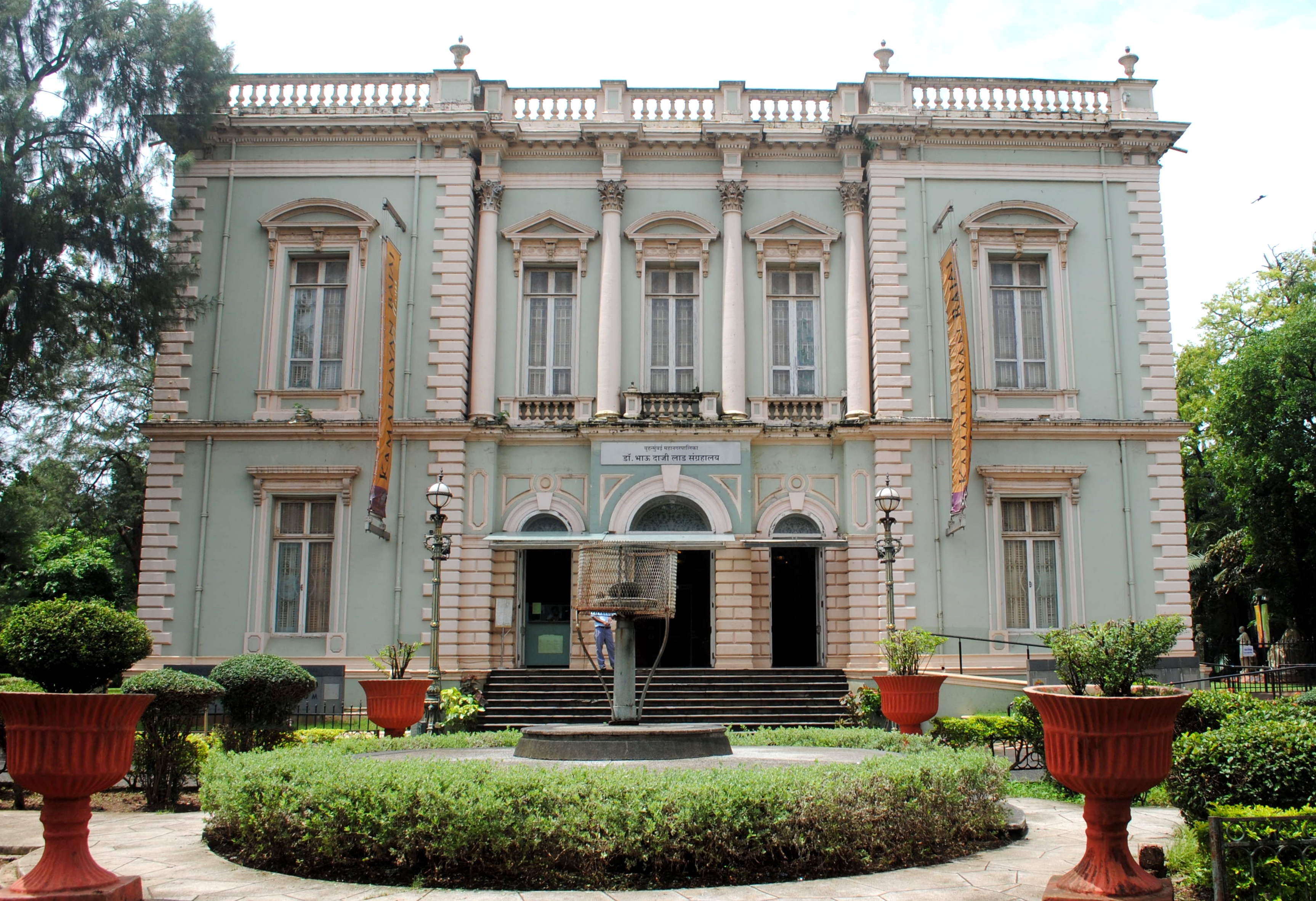
History of BDL
The Dr. Bhau Daji Lad Mumbai City Museum (formerly the Victoria and Albert Museum) is the oldest museum in Mumbai. Situated in Byculla East, it was originally established in 1855 as a treasure house of the decorative and industrial arts, and was later renamed in honour of Bhau Daji.
Lord Elphinstone established the Central Museum of Natural History, Economy, Geology, Industry and Arts, the first museum in Bombay in 1855; George Buist took the major initiative for its inception. In 1857, it was closed to the public and its collection was shifted to the Town Hall. In 1858, George Birdwood was appointed curator of the museum. Soon, a committee was formed, comprising him, Bhau Daji Lad and Jaganath Shunkerseth to raise money for construction of a new building for the museum. The foundation of the new building was laid in 1862. It was built with the patronage of many wealthy Indian businessmen and philanthropists like David Sassoon, Sir Jamsetjee Jejeebhoy and Jaganath Shunkerseth.
The construction of the present building in Jijamata Udyan in Byculla started in 1862 and was completed in 1871. The museum opened on May 2, 1872. In 1975, this museum was renamed as the Dr. Bhau Daji Lad Mumbai City Museum.
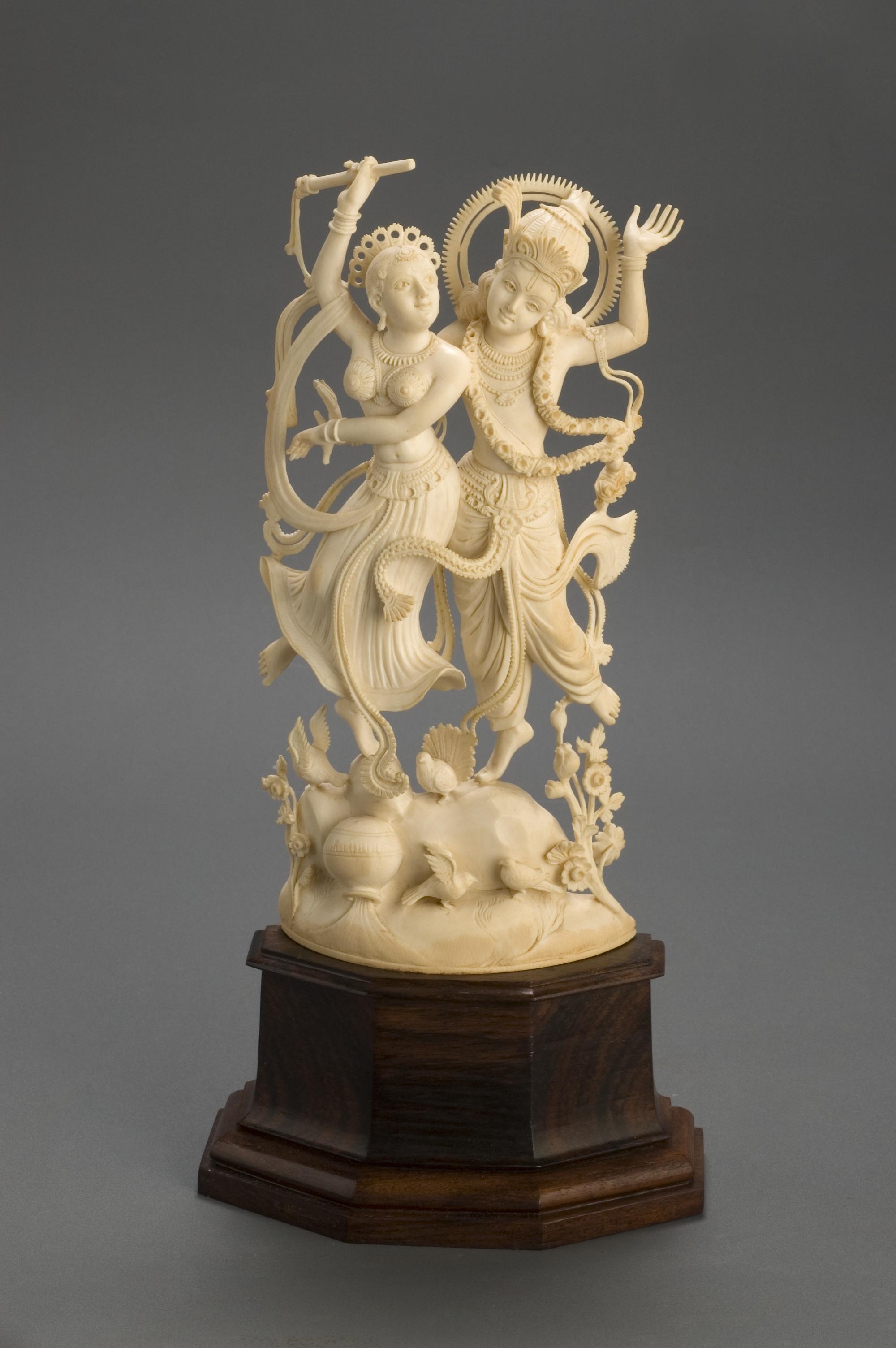
Image: Radha Krishna in Ivory; late 19th century – early 20th century; Trivandrum (now Thiruvananthapuram); Ivory.
The ivory image of Radha Krishna is a typical Travancore depiction of a Hindu deity adorned in traditional costume and ornament, yet is European in form, posture and expression. The British attempt to encourage naturalism, or the realistic portrayal of nature, is evident in the dancing figure of Radha and Krishna. Note the balletic pose and drapery, the cooing doves and foliage that are reminiscent of European style.
The Official Catalogue of the Delhi Exhibition published in 1903 by George Watt describes ivory carving from Travancore as having attained the “foremost position among the ivories in India”. Many popular bazaars and markets in Bombay stocked and sold ivory carvings from Travancore and Southern India, well into the 1950s and 1960s, when curators from the Museum purchased ivory carvings from Swadeshi Market and Khadi Village Industries Emporium in Bombay.
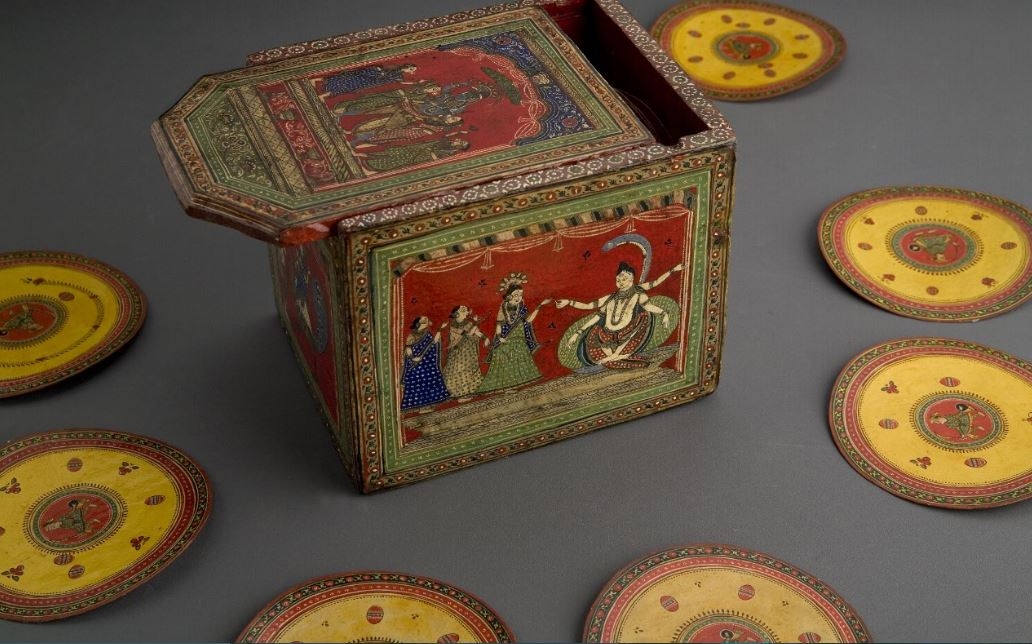
Image: Ganjifa Cards and Box, late 19th – early 20th century; Sawantwadi; lacquer on leather; lacquer on wood
This box, used to store Ganjifa cards depicts hand-painted figures of Hindu deities. The lid has a picture of the dark-skinned god Krishna playing Holi with gopis under a tree. On one side, we can see a depiction of Vishnu being attended to by the Goddess Lakshmi and two others. The images are based on drawings first published in ‘The Hindu Pantheon’ by Edward Moor in London, 1810.
Ganjifa is a card game that originated in 16th century Persia. The cards were hand-crafted and painted with figurative designs on the lacquered leather surface. Indian Ganjifa cards included themes of the Dashavataras, the Ramayana and Mughal courtiers. The Museum’s collection of Ganjifa cards was created in Sawantwadi near Goa, while it was part of the Bombay Presidency.
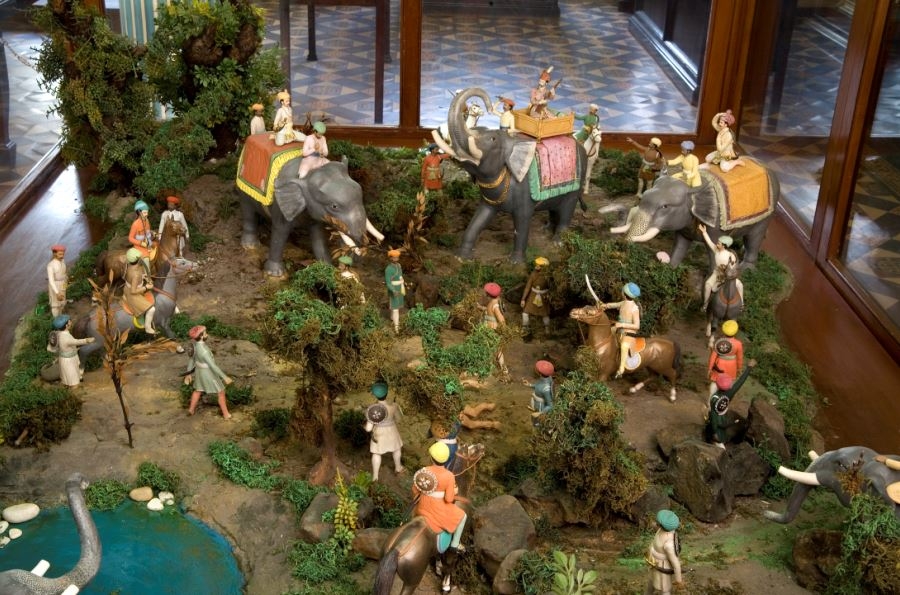
Image: Diorama of Emperor Jehangir on a Lion Hunt (1900-1935); Mumbai; half-baked terracotta and pigments.
The Museum has a unique collection of dioramas which were an important medium for education in the absence of film or video during late 19th to early 20th century. Aspects of Indian lifestyle and episodes from historical or mythological narratives were popular subjects of such dioramas.
This theatrical diorama depicts the Mughal Emperor Jehangir engaged in the royal sport of ‘shikar’ or a hunt. A favorite royal pastime, shikar was a popular subject of Mughal School miniature paintings, and is seen here in a rare three-dimensional form.
Based on a painting titled ‘Jahangir showing his hunting skill to Prince Karan’ (c.1615 A.D, housed at the Indian Museum Kolkata), the chief characters in the diorama are Emperor Jehangir, his son Prince Khurram or Shah Jahan and Prince Karan Singh of Mewar who was a guest at the Mughal court.

Image: Court scene by M.V. Dhurandhar; 1928, Mumbai; watercolor on paper
Renowned artist Mahadev Vishwanath Dhurandhar studied at the Sir J. J. School of Art between 1890 and 1895. He was also the first Indian director (1919 -1935) of the School of Art. Particularly skilled with watercolours, Dhurandhar became an illustrator and portraitist of great repute. He depicted his subjects with authenticity and sympathy, creating a unique visual record of contemporary Mumbai (Bombay) that has not been matched in any other city in India. This watercolour painting depicts a court scene in the theatrical tradition of western history painting.
This painting is a smaller version similar of his cartoon wall mural, titled ‘Stridhanam’, housed in the law courts, commissioned by the Law Members’ Chambers in 1929.
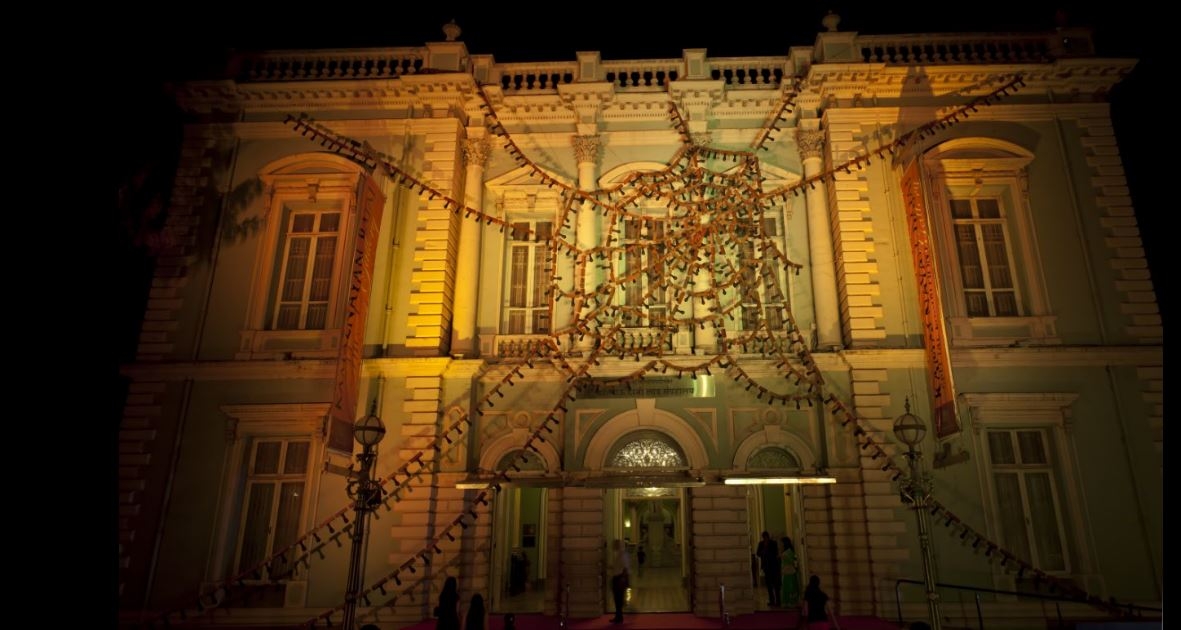
Image: ZegnArt Public / India; Untitled (Cobwebs/Crossing) by Reena Kallat; 2013, Mumbai; 550 resin rubber stamps with steel rope.
In 2013, the Museum partnered with ZegnArt, a project of Ermenegildo Zegna Group on a program titled ‘Public’. The project sought to encourage dialogue about the nature of public space and explore the dialectics between art and the urban environment.
Artist Reena Kallat was selected to conceptualise and create a public artwork for ZegnArt Public. Her work, Untitled (Cobwebs/Crossing) highlighted the relationship between public space and the city’s history. In this installation art, an oversized web made with hundreds of replica rubber stamps, Kallat wove a history of the city onto the façade of the Museum, with each stamp bearing a colonial street name that has been replaced by an indigenous one. By recovering the memory of one aspect of the process of decolonisation – the renaming of anglicised British street names with Indian or regional ones – it forms a palimpsest on to which generations re-inscribe stories. “A cobweb is evocative of time,” explains Reena Kallat, “and just as a room is left vacant, stories that are not visited gather cobwebs that appear to hold dust from the past.”
In a first of its kind, ZegnArt Public, who commissioned the project, donated the winning artwork to the Museum.
Would your museum like to be part of this monthly initiative? Please send us images and a brief description of five objects from your collection that the public and our readers should know more about. Write to marketing@rereeti.org.








Recent Comments